|
What Learners liked about the AR Experience |
What Learners think can be improved |
|---|---|
|
1. Ability to go through the info at own pace at a later time 2. Easier access to more media and video contents/ materials for course, as compared to the usual classes where videos are simply shown on projector screens 3. Interesting user experience. Nice layout. Like how the key points appear. Very engaging. At least I didn't feel sleepy! 4. Unique as compared to other workshops as it encourages the use of IT Supported Learning. Application was Fuss-free and able to save paper for printing the notes to articles. The videos also made the learning more interesting. |
1. More features eg interactive learning features 2. Can be just a list of QR codes/ hyperlinks. Not much pedagogical affordances. 3. Maybe AR pictures can be printed within our notes for easy access 4. Upon loading the content, there was not much interaction as it was really just a matter of navigating the different articles on a screen - still prefer to have it out in front of us in hardcopy for easy reference |
Augmented Reality-Based Learning

Description of Project: This project was an innovative endeavour to incorporate Augmented Reality (AR) in a Public Communications workshop. Initiated in 2017, the objective was to explore the potential of AR in enhancing the learning process. It aimed to transition from traditional paper-based methods to a digital, interactive, and immersive learning approach that would allow learners to engage with the course material at their own pace and in their own style. This blog post describes the approach I adopted in introducing AR as a learning experience.
Stakeholders: Trainers (Subject Matter Experts - SMEs), Learners
Responsibilities: Instructional Design, Courseware development, Content creation, SME Management
Role: As the Instructional Designer, I was responsible for designing and executing the AR-based learning modules. Using Blippar, I developed all the AR experiences, prepared digital content, trained the learners to use AR, and facilitated the use of AR in classroom discussions. Further, I worked closely with the lead trainer (SME) to ensure the smooth integration of AR into the existing curriculum, especially during the case studies discussions and practice. I also monitored the learning process, collected feedback, and made necessary adjustments to improve the effectiveness of the technology.
Duration: 2017 - 2018
Tools used: Blippar, Kahoot, Canva, Magisto, Workplace@Facebook, Google Docs/ Slides, Padlet, Polleverywhere
If you want to skip the writeup, here's a video of the AR experience for a workshop called “Fundamentals of Public Communications”.
PROBLEM:
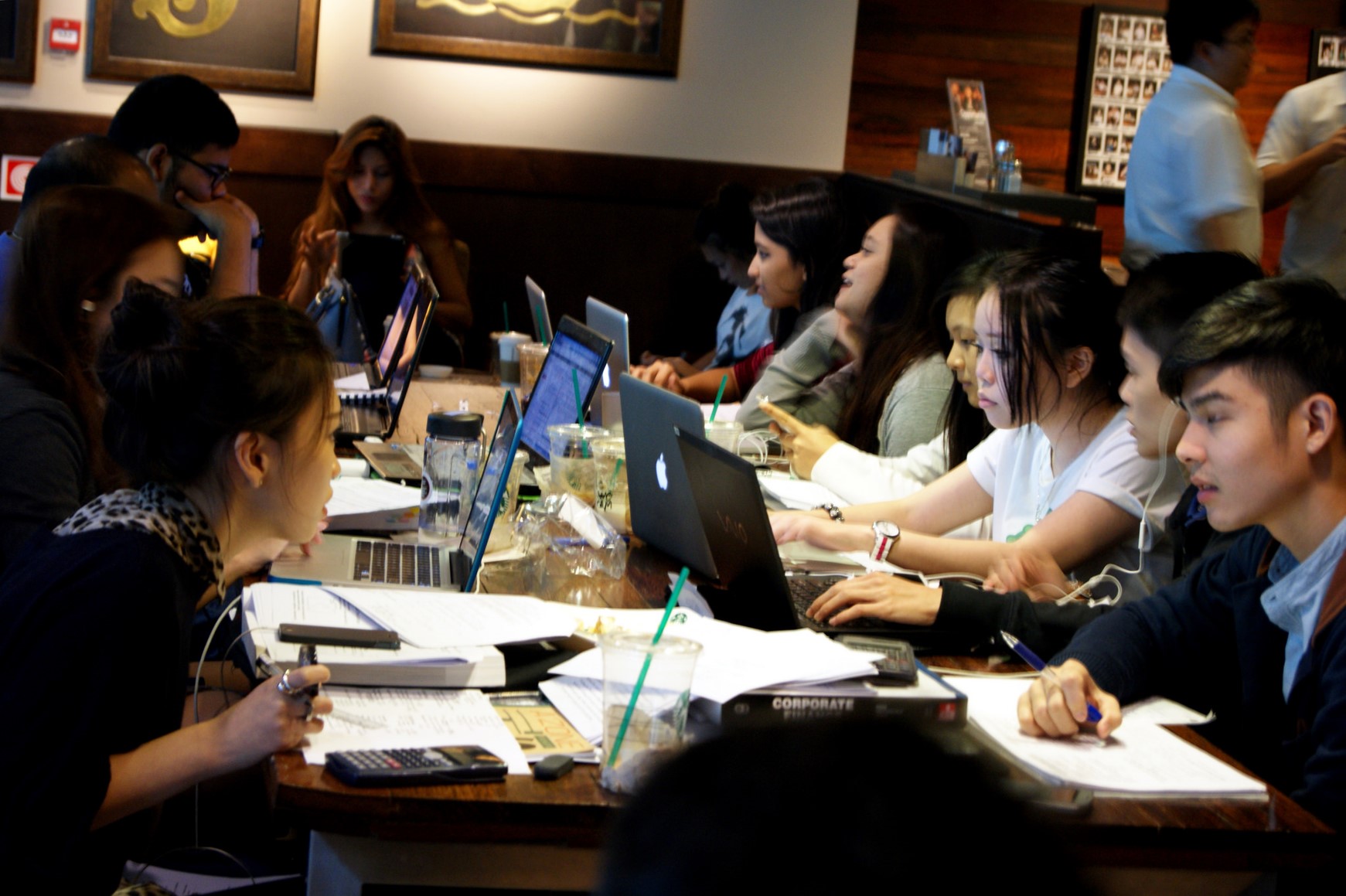
Problem 1: It was 2017 and College was seeing a new generation of learners who were Tech savvy with high knowledge of and interest in social media and Mobile technologies. With easy access to mobile devices, technology was embedded in their daily tasks outside the classroom. We were constantly thinking of ways to improve the following:
- Engagement and Motivation – Our experience with Public Officers was that they often juggle multiple responsibilities and maintaining interest in a course can be challenging. How might we boost their engagement and motivation?
- Pace and Style of Learning - Everyone has their own learning style and pace, and traditional teaching methods often struggle to cater to this diversity. How might we help learners control the pace and approach the material in the way that suits them best?
- Memory Retention - Remembering and recalling information can be challenging, especially for complex subjects. How might we improve memory retention?
- Updating Course Material – College was starting to move away from paper print outs and our case study exercises are usually filled with newspaper clippings, posters, press statements etc, which is expensive to print and time-consuming to update. How might we ensure that our learners always have access to the most current information while keeping costs down?
- Interactivity - Traditional methods often lack interactivity, which can hinder learning. How might we promote active learning and enhance understanding?
Problem 2: One of the perennial challenge Instructional Designers faces was convincing our Trainers (SME) to pilot new learning technologies. With the AR-based learning approach, there was a considerable amount of uncertainty and apprehension associated with introducing a new technology in the classroom. Additionally, it was a challenge to familiarize learners with using their mobile devices to scan images and interact with the AR content. The need to ensure that the technology was not a distraction, but rather a tool for enhancing learning, was also a significant concern.
SOLUTION:
Pokémon was the phenomenon that took over the world in 2016, it was Augmented Reality gamified in action. Against that backdrop, I felt that AR could be a possible way to enhance learning.
AR's interactive capabilities can boost engagement and motivation by providing a more immersive and exciting learning experience. With AR, learners can control the pace and approach the material in the way that suits them best. AR's multisensory approach can improve memory retention by providing a more stimulating learning experience. Updates on training material can be made digitally, ensuring learners always have access to the most current information. Lastly, AR can create interactive experiences, promoting active learning and enhancing understanding.
To convince the Trainer, I outlined the potential benefits of AR in learning and provided evidence from use cases around the world. It also helped that I had a great working relationship with the Trainer. For the learners, I used the start of the class to familiarize them with AR technology, scanning images, and navigating the AR content. The sessions were designed to be interactive and engaging to reduce any intimidation associated with the new technology. To ensure AR was used as a tool for learning enhancement, we implemented a controlled rollout of AR content, starting with simpler tasks and gradually moving towards more complex applications.
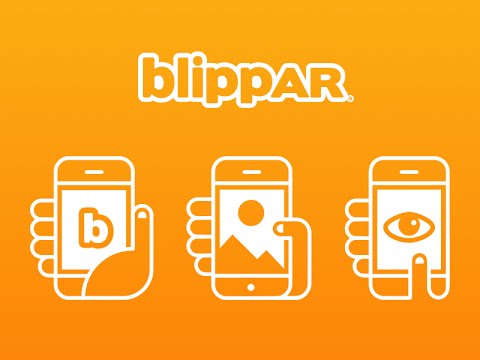
As with most of the other projects I was involved with, I preferred to use software that were either free or had generous trial periods. To build the AR experiences, I used Blippbuilder which was free and learners can access the AR content via the IOS and Android App called Blippar.
PROCESS:
The process began with a detailed analysis of the current curriculum and identifying areas where AR could add value. These Public Communications workshops focused on Marketing Communications and Public Communications topics and had case studies that covered real scenarios eg SMRT Train breakdown in 2011 for Crisis Comms.
The case studies were typically just a short write up with one or two newspaper clippings attached to them. In order to provide a multi-sensory and interactive learning experience, I curated more content to support the case studies using videos, audios, images to provide updated information and to provide the variety of learning.
This is an example of a Resource document on how the AR experience will look like with the added assets.
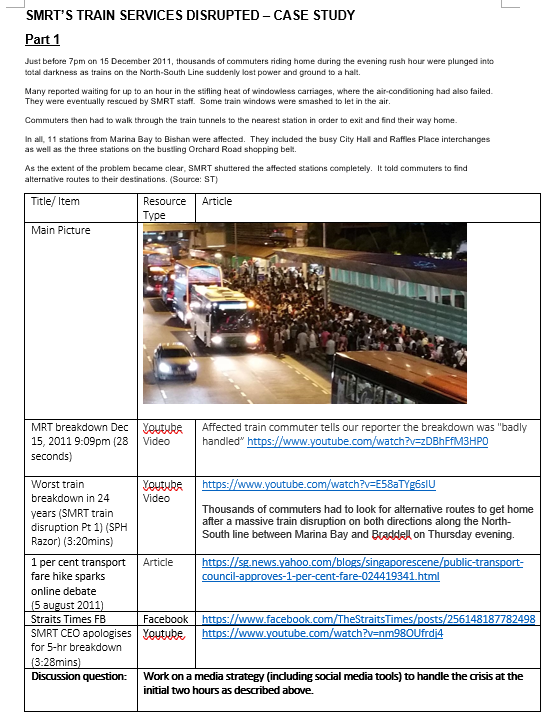
I worked with the Trainer to identify suitable content and I went about developing the AR experiences. Some of the AR Content that I built for case studies included:
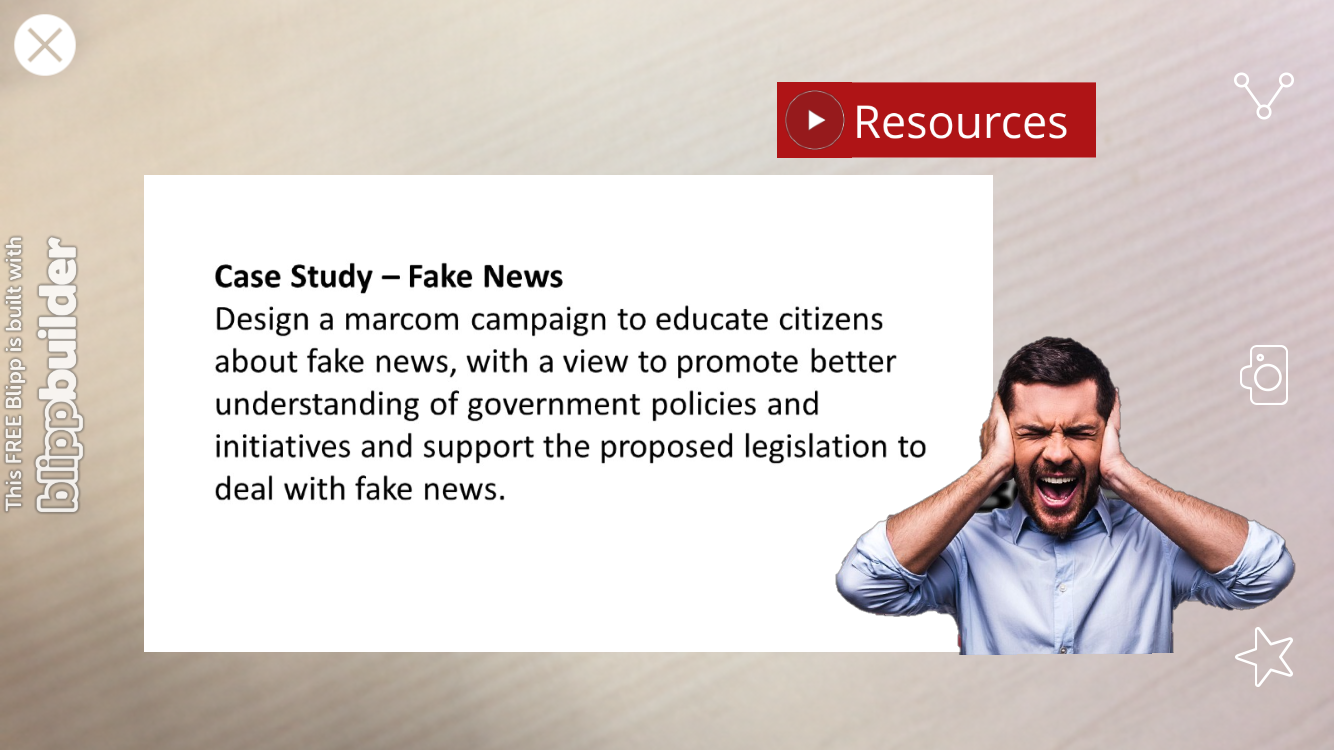
Fake News - Design a marcom campaign to educate citizens about Fake News
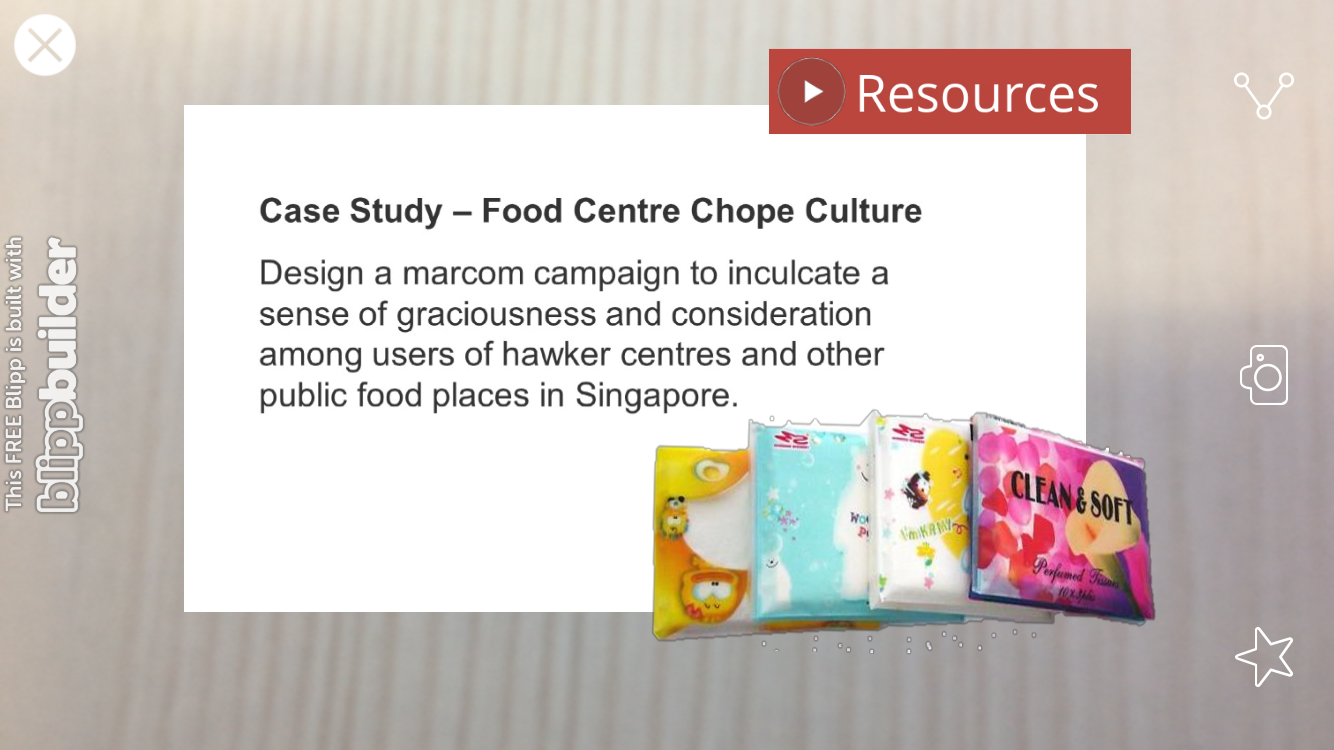
Food Centre Chope Culture - Design a marcom campaign to inculcate a sense of graciousness and consideration.
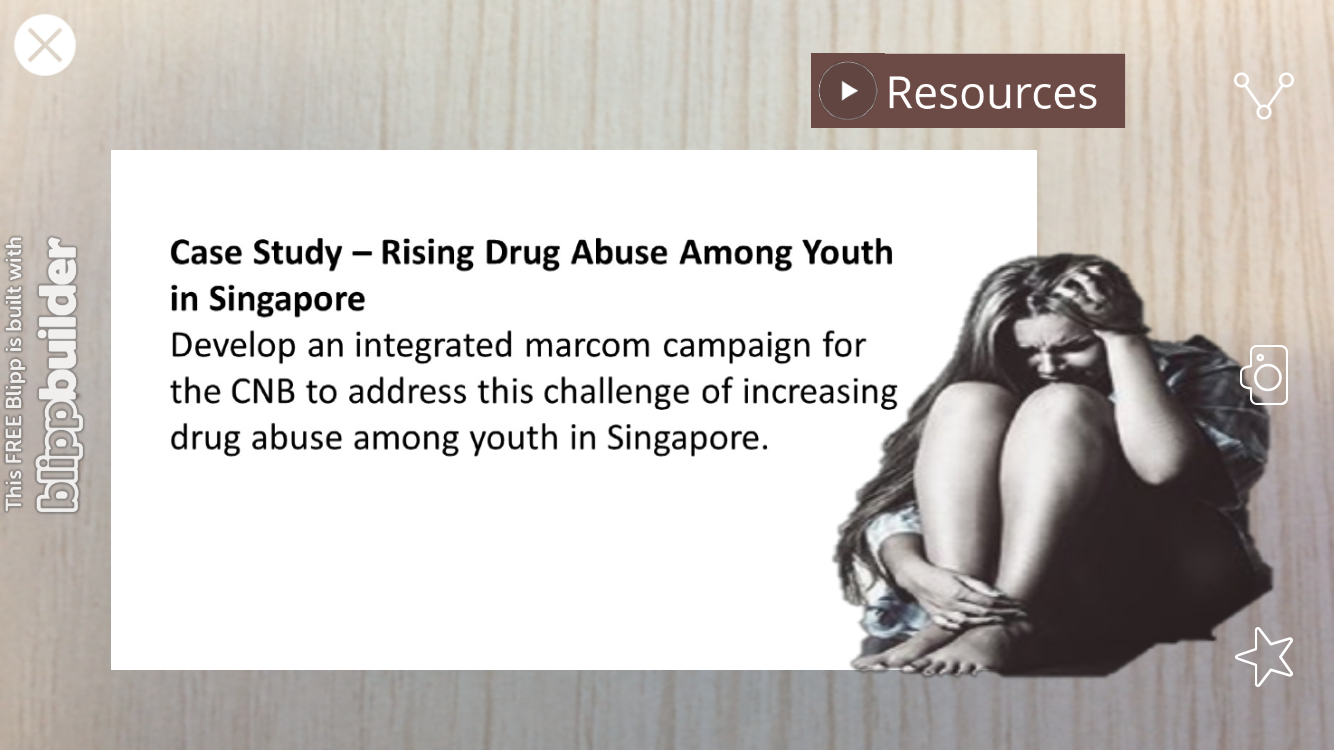
Drug Abuse – Develop an integrated marcom campaign for CNB to address challenge of rising drug abuse among youths in Singapore.
I did dry-runs with the Trainer to test these experiences in a controlled environment to ensure they worked and added value to the learning process. In the class, we gradually introduced AR by starting with simple tasks and eventually integrating it fully into the course. Regular feedback was collected from both the learners and the trainer to identify any potential issues and make necessary adjustments. The process was iterative and adaptive, allowing us to refine the use of AR in the classroom.
How did the experience work?
1. We created an AR wall gallery where each picture was an AR Trigger. Learners have to use their mobile devices to scan the images using the Blippar App.
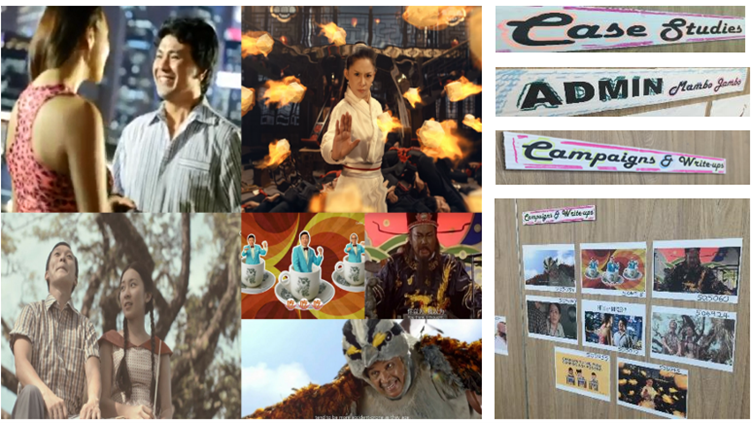
2. We replaced all case study handouts with an AR Exercise Sheet which learners can scan.
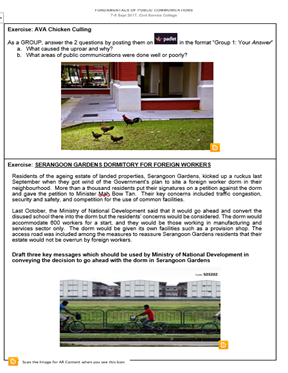
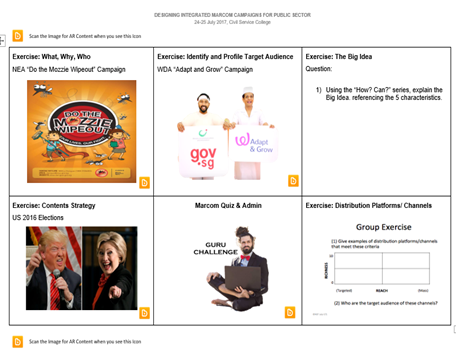
How did I design the case study learning experience?
For example, upon accessing the SMRT Train Crisis exercise (mentioned above), learners will watch a video that shows the confusion faced by Commuters and SMRT train staff within the first 2 hours.
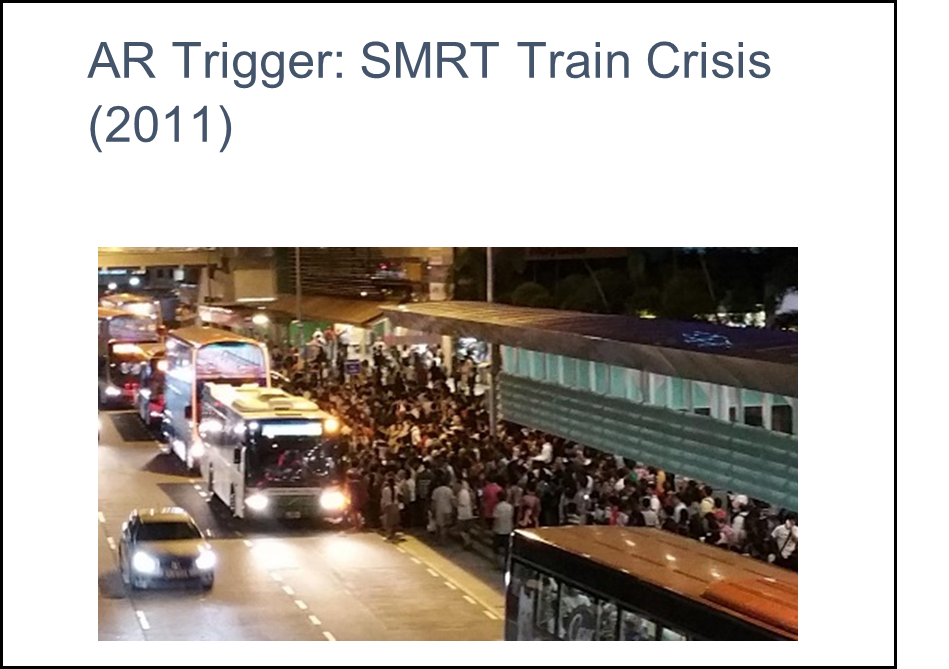
Learners have to scan this image (AR Trigger) using the Blippar App in order to access the AR content.
I used Gagne’s 9 Event of Instruction to anchor the activities for learning such as gaining learners’ attention through the video of shocked commuters. Learners will also navigate the content (Gagne’s 4th event) by seeing a commuter’s Facebook post of the broken glass for the train door. Although this was in 2011, these accounts are still live and learners can read the comments from other netizens. Thereafter the participants are tasked to develop a crisis comms plan on behalf of SMRT to address all these queries.
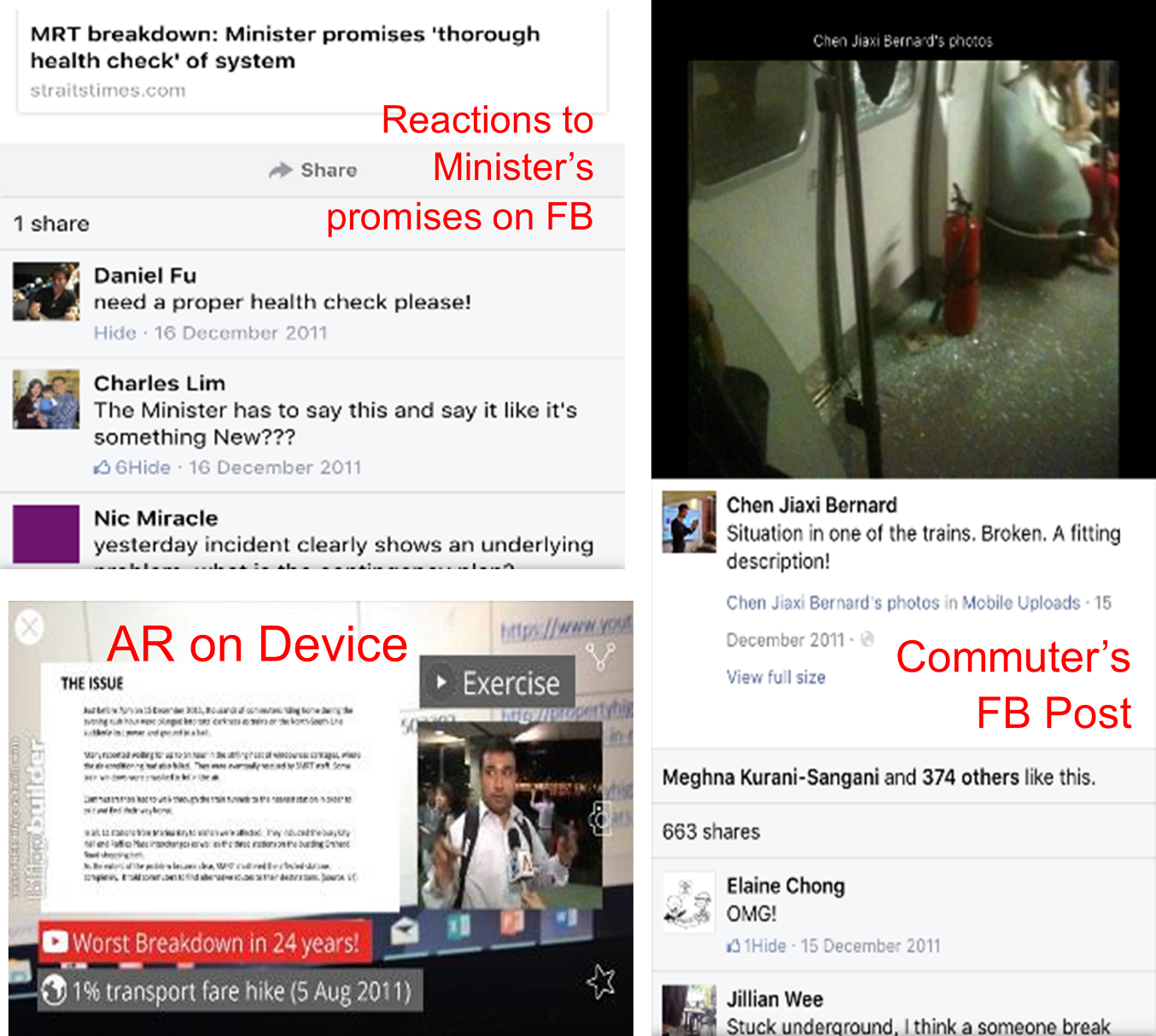
I felt that AR allowed affordances for rich story telling. This was a powerful way for learners to visualise the story and be impacted by the whole idea. This also increased the interaction of the learners with the content. Such an approach also allowed learners to visit the past and apply theories to visit the possible future, and in between stay focused on current events. Even though the SMRT crisis happened more than 5 years ago, in presenting the information this way, learners can read netizen comments, watch and rewatch videos and immediately access news articles and gain better insights to this issue.
Assessing Effectiveness
For “Fundamentals of Public Communications”, I obtained feedback from learners and the Trainer on the learning experience as well as ease of use of the technology.
Based on a 5-point likert scale, learners who rated 4 and above agreed that:
- Downloading the App and accessing the AR content were fuss-free - 93.8%
- Instructions given were clear and easy to follow - 93.8%
- The AR Experience helped me to think and learn more deeply about the topic - 59.4%
- The AR content were purposeful and informative - 81%
- The AR Experience helped me participate more during the specific exercises - 59.4%
|
What did the Trainer thought was the value-add and areas done well? |
What could have been done better? |
|---|---|
|
1. More online resources such as websites, videos and articles can be used as reference materials for group discussions and exercises. 2. Majority of young officers enjoyed the experience for discussions and exercises 3. Added to a more robust discussion among the learners who were able to better appreciate case examples 4. Multiple usage for other topics using the same materials 5. The case studies used were well designed and provided very good learning points that were relevant to the objectives of the course. |
1. All materials displayed on the gallery walk should be discussed (even if briefly) during the course. 2. Given the tight schedule for the two day programme, the participants did not have much time to explore all the displayed materials in the gallery walk. |
Here's a video of the AR experience for a workshop called “Fundamentals of Public Communications”.
REFLECTIONS:
On reflection, introducing AR into the classroom was a challenging yet rewarding experience. Navigating the initial resistance and familiarizing learners with new technology was a learning experience in itself. The project underscored the importance of a learner-centric approach, adaptability, and continuous improvement in instructional design. The power of technology to transform learning and make it more engaging, interactive, and effective was clearly evident. However, it also highlighted the need for a balanced approach, ensuring technology enhances learning rather than overwhelming or distracting learners.
RESULTS:
The results were largely positive. Learners reported an increased level of engagement and interactivity in the classroom. While there were many positives from this, my regret was not being able to scale it up such that more of College’s programmes uses AR as an enabler for instruction and learning.
Following these pilot runs, I presented my efforts at Senior Management Meeting and was invited to present at a department’s townhall to inspire their officers. I was also invited to share my experience with Communities of Practice which led to me teaching the L&D department of a partner agency (govt) on how to build AR-based learning experiences. Lastly, I was also invited to present to the Civil Service College of Nigeria when they visited Singapore in 2018.